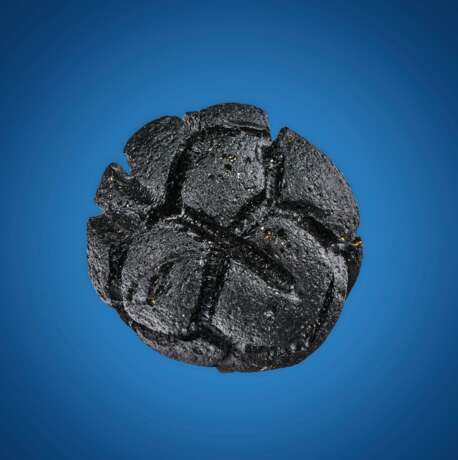ID 389975
Lot 32 | BIKOLITE TEKTITES — WHEN HEAVEN AND EARTH COLLIDE
Estimate value
$ 1 000 – 1 500
The oblate spherical form is a result of surface tension causing the silicate melt to minimize its shape, this dark natural glass is accented with archetypal contraction grooves and a finely dappled surface.
60 x 61 x 51mm (2.5 x 2.5 x 2 in.)
191g (0.4 lb)
The origin of such silicated glass formations was long considered a mystery. Today scientists agree these objects, whose name derives from the Greek tektos (“molten”), form when an asteroid impacts Earth. The extraordinary heat and pressure resulting from such a cataclysmic collision liquefies deposits of wind-blown terrestrial dust, portions of which are splashed into the upper atmosphere, and return to Earth as solidified glass. Tektites are named after the locality where they are found, hence: Australites, Indochinites, Philippinites, Moldavites, Libyan Desert Glass, etc. The greater the silica content contained in the splash, the lighter the color. Bikolite is a type of Philippinite, most often recovered by gold miners on Luzon, the largest and most populous island of the Philippines. In the seminal work “Philippine Tektites: Volume 1” by H.O. Beyer (1961), a local Tagalog custom is described, “It is generally believed that wherever a large tektite is found, sizeable gold nuggets will also occur. Furthermore, it is generally thought that the tektite has been responsible for the increase in size of the gold. Therefore, nearly every native miner in this district keeps a sizable tektite or two in his kitchen---usually over the fire-place---and when he brings home each day his little bag of gold dust, he puts it beside the tektite, in the fond belief that during the night the two will mate and the gold increase in size."
193g.
A tektite’s shape is aerodynamically determined and is the result of the altitude the molten material is splashed into the sky, subsequent ablation, its degree of orientation (whether it’s inverting as it cools and plunges earthward) and its speed of rotation as it penetrates the atmosphere.
Christie's would like to thank Dr. Alan E. Rubin at the Institute of Geophysics and Planetary Physics, University of California, Los Angeles for his assistance in preparing this catalog note.
| Address of auction |
CHRISTIE'S 8 King Street, St. James's SW1Y 6QT London United Kingdom | |
|---|---|---|
| Preview |
| |
| Phone | +44 (0)20 7839 9060 | |
| Buyer Premium | see on Website | |
| Conditions of purchase | Conditions of purchase |




